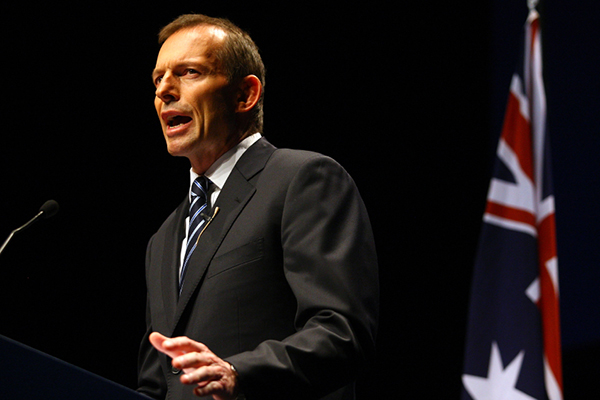June 24, 2014
Beggar bowl politics blocks Federation’s potential
By Garry Bowditch
Calls to lift the GST rate to placate the states financial challenges will serve to only exacerbate an already severe vertical fiscal imbalance and prolong a deeply unsatisfactory chapter in Australia’s Federation.
While ever the states are hostage to an extreme reliance on Federal funding, beggar bowl politics will remain the tactic of choice. Unfortunately competition between the states has degenerated into a scramble to divide the Federation’s economic spoils rather than its multiplication.
The Abbott Government must break this impasse and ensure better mechanics from a renovated Federation that underwrites productive interactions between the two levels of government.
Australians have a love-hate relationship with their federation. The promised alchemy of the Federation was good on paper; a young nation that can be greater than the sum of its parts.
Instead higher taxes, wasteful administrative duplication, poor value for money for infrastructure and public services are the new norm.
The fault line of the Federation is starkly evident with its GST arrangements. A federally-imposed GST rate increase would deliver instant gratification for more dollars to the states but not the much needed autonomy nor the accountability to be responsible for their own fiscal destiny.
Australia’s Federation however must rediscover the strengths of its past, and learn from its shortcomings. The Federation was originally about strengthening diversity through interstate commerce; not imposing uniformity for its own sake.
To that end, the Federation should empower the states to deliver public services that are fit for purpose for their jurisdiction; anchored with access to efficient state taxes to fund these expenditures.
These are necessary preconditions for greater efficiency and productivity. While a small degree of vertical fiscal imbalance (VFI) may be required for the Commonwealth to support horizontal fiscal equalisation (HFE), the principle itself should be contested as part of a wider reform of the Federation.
Shifting large tranches of GST revenue from NSW, Victoria and WA to recipient states so they can have the financial capacity but no responsibility to provide services at similar quality and price is unusual, if not absurd.
As a result, HFE has enabled perverse outcomes such as the extravagance of the Northern Territory Parliament House. The Commonwealth must be more vigilant to the principle of “first, do no harm”.
For example, the states are fully aware that breaking up bottlenecks and decongesting existing infrastructure is critical to productivity growth.
An unintended consequence of competitive federalism has caused the states to abandon high benefit-cost ratio projects for inferior ones in the pursuit of grabbing “politically correct” Federal money before another state.
As recently as the 2014 Hockey Budget, preferred infrastructure projects had the appearance of being sensible but there was inadequate discussion and data on why certain projects were supported.
For example, why did the Toowoomba range crossing succeed over other candidate projects? This vacuum of information leaves impressions that project selection methods are inadequate, and not up to global best practice.
Infrastructure Australia’s (IA) new management team must avoid mistakes of the past. Extravagant and over-capitalised proposals such as Brisbane’s Cross River Rail drew attention away from more prudent and incremental interventions such as better timetable management and utilisation of train sets.
The BaT Tunnel, which superseded Cross River Rail, will now deliver Brisbane a more astute peak hour solution for half the capital cost of the original proposal that was aggressively supported at the time by IA and the Commonwealth.
Renovating the Federation is Australia’s most important infrastructure project and microeconomic reform agenda item all in one. The Abbott Government has an opportunity to kick off a long-term structural reform program of the economy starting with giving back to the states and territories the responsibility and policy levers to do their job.
For this to occur, the states must be much more front-footed to reform of this type.
If this can be achieved, then the Federation can once again deliver as originally intended permanent benefits to all Australians.
This article was originally published on The Conversation. Read the original article.
UOW academics exercise academic freedom by providing expert commentary, opinion and analysis on a range of ongoing social issues and current affairs. This expert commentary reflects the views of those individual academics and does not necessarily reflect the views or policy positions of the University of Wollongong.
